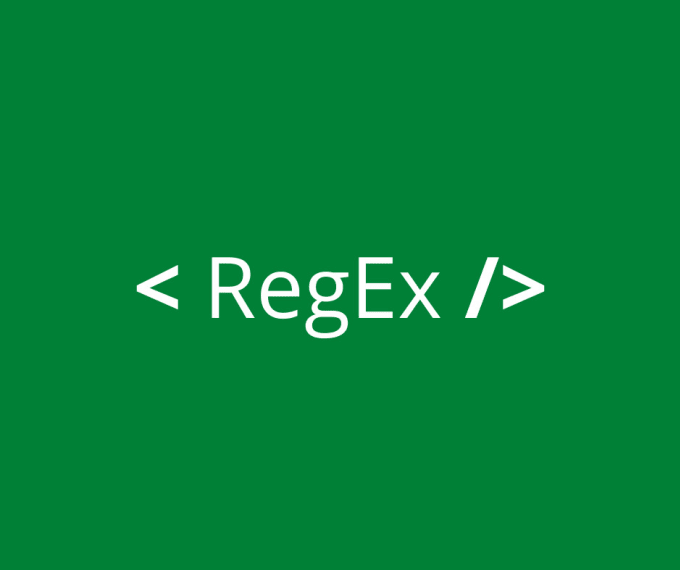Understanding Java Regex: Making it Simple for Beginners
When I first encountered regular expressions (RegEx) during my Java learning journey, I felt completely lost. The patterns looked like cryptic gibberish, and I couldn’t catch how they were supposed to work. I spent a lot of time trying to make sense of them, only to realize that once you break RegEx down into its building blocks, it’s not as hard as it seems. Today, I want to explain RegEx basics in the simplest way possible, using common examples you can understand and remember.
What is Regex, and Why Should You Care?
At its core, RegEx (short for regular expressions) is a tool used to match patterns in text. Whether you’re trying to verify if a string is in a particular format, search for a specific substring, or even replace certain characters, regex makes this process efficient. Instead of manually checking each character or word, regex allows you to define flexible patterns that can handle variations in the text.
For example, you could use regex to:
- Validate if a user’s email address follows a proper format.
- Find all words that start with a specific letter in a document.
- Extract numbers from a string of text.
In Java, regex is typically used with the .matches() method, which checks if a string matches a specific pattern.
String pattern = "hello";
String input = "hello";
System.out.println(input.matches(pattern)); // true
Code language: JavaScript (javascript)In this example, the pattern is simply the word "hello". The .matches() method checks if the string "hello" exactly matches the pattern. As expected, it returns true. This is easy enough, but regex is far more powerful than matching exact strings.
Now, let’s move into some of the foundational regex symbols that allow you to create more flexible patterns.
Understanding the Dot (.)
One of the first things you’ll learn in regex is the dot (.). This is a wildcard character that can represent any single character except a newline (\n). This makes it useful when you don’t care what specific character appears in a certain position but you need a placeholder to represent some character.
String pattern = "a.a";
String input1 = "aba";
String input2 = "aca";
String input3 = "aa";
System.out.println(input1.matches(pattern)); // true
System.out.println(input2.matches(pattern)); // true
System.out.println(input3.matches(pattern)); // false
Code language: JavaScript (javascript)Here, the pattern "a.a" means it will match any string that starts with an a, followed by any character, and ends with another a. Both "aba" and "aca" match this pattern, but "aa" does not because it lacks the middle character.
The Question Mark (?)
The question mark (?) in regex is used to make the character before it optional. This means that the character can appear either 0 or 1 time. It’s a simple way to account for small variations in a string without making the regex too complicated.
Imagine you are writing code to match variations of the word "favor". In some regions, it’s spelled "favor", while in others it’s spelled "favour". The difference is the optional u. We can use the ? quantifier to create a pattern that matches both spellings.
String pattern = "favou?r";
String input1 = "favor";
String input2 = "favour";
String input3 = "favours";
System.out.println(input1.matches(pattern)); // true
System.out.println(input2.matches(pattern)); // true
System.out.println(input3.matches(pattern)); // false
Code language: JavaScript (javascript)The pattern "favou?r" specifies that the string should start with "favo", and the "u" is optional because of the question mark. In "favor", the "u" is absent, but the pattern matches since the question mark allows the "u" to be optional. In "favour", the "u" is present, so it matches as well. However, "favours" does not match because the extra "s" at the end is not part of the pattern.
Combining . and ?
Now, let’s combine the powers of the dot (.) and the question mark (?) to create even more flexible patterns. When used together, you can allow for any character to appear in a certain position, but make that character optional.
String pattern = "a.b?";
String input1 = "aab";
String input2 = "aa";
String input3 = "aabc";
System.out.println(input1.matches(pattern)); // true
System.out.println(input2.matches(pattern)); // true
System.out.println(input3.matches(pattern)); // false
Code language: JavaScript (javascript)Here’s how the pattern „a.b?” works:
The „a” is fixed and must appear. The dot stands for any character that must appear after the „a”, and this could be any letter or symbol. The „b?” means that „b” is optional—it can appear, but it’s not required.
In „aab”, the dot is replaced by „a” and the optional „b” is present, so it matches. In „aa”, the dot is replaced by „a” and the optional „b” is not present, but it still matches because „b” is optional.
„aabc” does not match because there are extra characters („c”) that aren’t accounted for by the pattern.
String pattern = "b.a?";
String input1 = "ba";
String input2 = "bat";
String input3 = "batman";
System.out.println(input1.matches(pattern)); // true
System.out.println(input2.matches(pattern)); // true
System.out.println(input3.matches(pattern)); // false
Code language: JavaScript (javascript)In this example, the pattern "b.a?" matches strings that start with b, optionally contain a middle character, and may end with a. "bat" matches because the optional a is there, and "ba" matches because the middle a is optional. However, "batman" does not match because it has too many characters.
Final Thoughts
Regular expressions may seem complicated at first, but once you understand how each symbol works, you can start creating patterns that make your code easier. The dot (.) helps you match any character, while the question mark (?) shows that a character is optional. Together, they are powerful tools for finding patterns.
In future posts, I’ll cover topics like sets (for example, [abc] to match 'a’, 'b’, or 'c’), ranges (like [0-9] for digits), and more simple patterns to help you improve your regex skills!

Dodaj komentarz